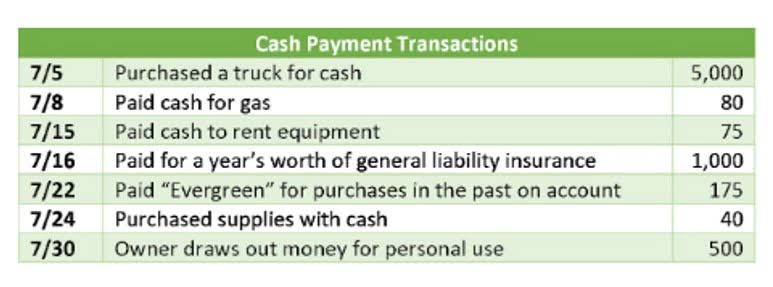
A liability account in accounting represents the various financial obligations a company owes to others, recorded on its balance sheet. These accounts are essential in tracking and managing debts and obligations arising from past business transactions. For instance, accounts Bookkeeping for Veterinarians payable account for money owed to suppliers for goods or services received but not yet paid for. Similarly, wages payable reflect salaries due to employees, and interest payable indicates interest owed on borrowed funds.
- The portion of the vehicle that you’ve already paid for is an asset.
- A normal operating cycle is the time frame needed to convert money to raw materials, finished products, sales, accounts receivable, and money back again.
- Liabilities are obligations to other parties, such as payable to suppliers, loans from banks, bonds issued, etc.
- The left-side value of the equation will always match the right-side value.
What Are Liabilities in Accounting? (With Examples)

Assume that a company is facing a lawsuit from a rival firm for patent infringement. The company’s legal department thinks that the rival firm has a strong case, and the business estimates a $2 million loss if the firm loses the case. Contingent liabilities are recorded if the contingency is likely and the amount of the liability can be reasonably estimated. The liability may be disclosed in a footnote on the financial statements unless both conditions are not met. The accounting equation is a concise expression of the complex, expanded, and multi-item display of a balance sheet.
What Are Assets, Liabilities, and Equity?

Liabilities impact negatively on the financial net worth of a business or company, while assets impact positively and increase the financial net worth of a business or company. Categories of contingent liabilities according to GAAP (Generally Accepted Accounting Principles) include probable, possible, and remote. Risks of contingent liabilities are uncertain since they are dependent on future occurrence, and there are no interest rates until the liability occurs. Did you know that liabilities play an important role in the overall growth of every company? income summary With the right amount of liabilities, you can finance operations and pay for large expansions.
What is a Liability?

Exxon, Shell, BP, and Chevron have combined debts of $ 184 billion amid what is liabilities in accounting a two-year slump. The reason is that crude oil prices have remained lower than profitable levels for too long. And these companies did not expect this downturn to extend this long. So they took too much debt to finance their new projects and operations. The above ratios are some of the most common ratios used to analyze a company’s liabilities. However, there is no limit to the number and type of ratios to be used.

It represents the book value of the owners’ interest in the business enterprise. A liability is an obligation payable by a business to either internal (e.g. owner) or an external party (e.g. lenders). There are mainly four types of liabilities in a business; current liabilities, non-current liabilities, contingent liabilities & capital. A company may take on more debt to finance expenditures such as new equipment, facility expansions, or acquisitions.
- Even though they are only estimates, due to their high probability, contingent liabilities classified as probable are considered real.
- This article provides more details and helps you calculate these ratios.
- Contingent liabilities adversely impact a company’s assets and net profitability.
- AT&T clearly defines its bank debt that’s maturing in less than one year under current liabilities.
- They represent obligations or debts that a business owes to other parties, such as suppliers, lenders, and employees.
- Liabilities may he defined as currently existing obligations which a business enterprise intends to meet at some time in future.
- In addition, liabilities facilitate and more efficiently allow transactions between businesses.
